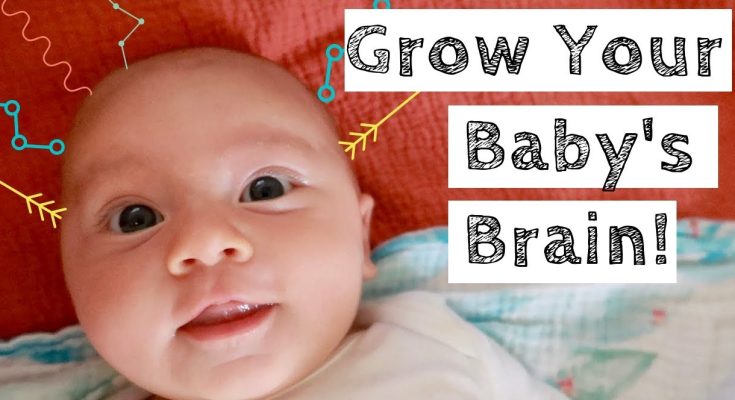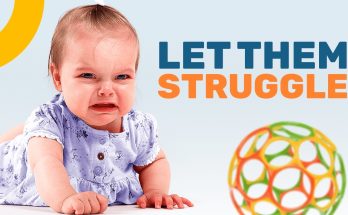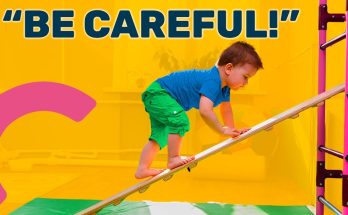The first few months of your baby’s life are crucial for brain development, and while they may seem too young for “play” in the traditional sense, there are a number of activities you can engage in to stimulate your newborn’s senses, foster bonding, and lay the foundation for cognitive development. Even at 0-3 months, babies are rapidly absorbing information from the world around them, so it’s important to engage in activities that encourage their growth in a gentle, loving way. Here’s how to make the most of playtime with your newborn in the first three months, focusing on activities that aid in brain development.
1. Tummy Time – Building Strength and Coordination
Tummy time is one of the most important activities for your newborn in the first three months. It may seem simple, but it’s essential for helping babies build muscle strength, coordination, and motor skills. Starting tummy time early is key to promoting healthy development.
- Why Tummy Time is Important: When babies are on their tummy, they use their neck, back, and arm muscles to push up and turn their head. This helps with developing the muscles needed for rolling over, crawling, and later sitting up and walking. It also helps prevent flat spots from forming on the back of their heads.
- How to Do Tummy Time: Begin tummy time by laying your baby on their stomach for 2-3 minutes at a time, several times a day. Start on a soft surface like a blanket, and slowly increase the time as they grow stronger. You can get down on the floor with them to encourage them to lift their head and look at you. Place colorful toys or mirrors within their line of sight to stimulate their curiosity.
2. Visual Stimulation – Encouraging Eye Development
Newborns are born with blurry vision, but during the first few months, their eyesight rapidly improves. You can help develop their vision through visual stimulation, which also supports brain development.
- High-Contrast Images: Babies are drawn to bold, high-contrast patterns, so try showing them black-and-white or brightly colored toys and images. These high-contrast visuals are easier for newborns to focus on. Hold a black-and-white or brightly patterned object about 8-12 inches from their face and move it slowly from side to side.
- Faces and Expression: Babies are naturally attracted to faces, so make sure to spend time talking to them and making expressions. This will help them start recognizing and mimicking emotions. Talking, smiling, and making funny faces will also encourage them to develop social skills.
- Mobile or Play Gym: A baby play gym with hanging toys can keep your little one entertained while also encouraging them to reach and look at various objects. Many gyms come with bright colors and soft textures, which will engage their developing sense of sight.
3. Auditory Stimulation – Encouraging Hearing and Language Development
Newborns are born with the ability to hear sounds, and auditory stimulation plays an essential role in early brain development. Hearing your voice and other sounds helps babies develop language skills, so engaging them with sounds is vital for cognitive growth.
- Talk to Your Baby: From day one, start talking to your baby. Your voice is soothing and comforting, and they’ll begin to recognize it. Talk to them as you go about your day, describing what you’re doing, or even singing lullabies and nursery rhymes.
- Use Musical Toys: Soft, soothing music or gentle lullabies can calm your baby and stimulate their auditory senses. There are plenty of toys that play music or sounds when your baby presses a button, or you can simply play music in the background.
- Rattles and Noise-Making Toys: Gentle rattles or toys that make soft crinkling sounds will draw your baby’s attention and help with sound recognition. Hold the rattle near your baby’s head and gently shake it to see if they turn their head in response.
4. Touch – Exploring Different Textures
Touch is one of the most important senses for newborns as it helps them make sense of the world. Babies are constantly learning about their environment through tactile experiences.
- Skin-to-Skin Contact: The most powerful touch experience for a newborn is skin-to-skin contact. This not only helps with bonding but also supports emotional regulation, and it can even help with brain development.
- Sensory Play with Textures: Offer your baby soft, textured toys or fabric. You can rub soft blankets, baby-safe fabrics, or even your hand gently on their skin. This introduces them to the sensation of different textures, which is important for sensory development. You can also allow them to grasp soft toys or fabric to strengthen their hand muscles.
- Massage: Gently massaging your baby’s arms, legs, and back with a mild baby lotion can help soothe them and promote body awareness. Light touch or pressure can also help your baby feel calm and secure.
5. Play with Mirrors – Fostering Self-Awareness
While babies at this age don’t have the concept of self-awareness yet, playing with mirrors is a great way to introduce them to the idea of their own reflection, which is the early foundation for social and emotional development.
- Baby-Safe Mirrors: Lay your baby down in front of a baby-safe mirror and allow them to look at themselves. They may be fascinated by their reflection and may start trying to reach or make faces at themselves. This simple activity introduces the concept of identity and helps with visual development.
6. Singing and Music – Bonding and Language Skills
Singing to your baby isn’t just soothing for them; it also supports brain development and language skills. Babies respond to the rhythm and melody of music even before they can understand words.
- Singing Lullabies and Rhymes: Even if you’re not a singer, your baby will enjoy hearing you sing. Lullabies, nursery rhymes, or even soft melodies will not only calm your baby but also stimulate their brain.
- Sound Repetition: Repeating simple sounds or phrases will help your baby start to recognize patterns and begin to associate words with emotions. This is an early step in language development.
7. Gentle Rocking and Movement – Calming and Soothing
Babies love motion, and gentle rocking or swaddling can help soothe them while stimulating their senses. Movement helps babies process new information and calm down after overstimulation.
- Gentle Rocking: Whether in a rocking chair, glider, or simply in your arms, gentle rocking movements are soothing and help your baby feel comforted.
- Bouncy Seats or Carriers: You can also try using a baby bouncer or carrier to gently move them while offering a view of their surroundings. This is a great way for them to experience the world around them while feeling safe and secure.
Conclusion: Creating a Stimulating Environment for Your Baby
While your 0-3 month old may not be able to “play” in the way older babies do, engaging them in these simple, developmentally appropriate activities will lay a strong foundation for learning and bonding. Through tummy time, visual and auditory stimulation, touch, and music, your newborn’s brain is growing and developing at a remarkable rate. Remember that the best “play” for your baby is not necessarily structured or elaborate—often, the simplest moments of connection and care are the most important for their development. Enjoy these early months, knowing that you’re providing your baby with the building blocks for a bright future.



